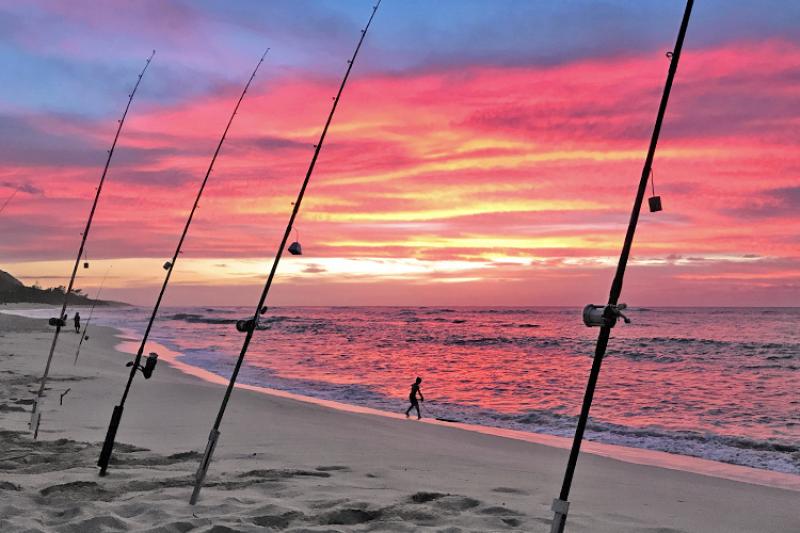By now we have all heard about climate change and some of us may have started to notice changes out on the water. Warmer ocean temperatures, more frequent algal blooms, your favorite species arriving earlier in the fishing season—these are all signs the environment is changing. Across the United States, changes in our climate and oceans are affecting our communities, businesses, and natural resources—including our fisheries and coastal habitats.
Climate change is already affecting the productivity, abundance, distribution, and composition of fish stocks that anglers enjoy. As waters warm, popular recreational species like black seabass and flounder are moving north along the Atlantic Coast to keep pace with rising temperatures. In the Gulf of Mexico, species are encountering more frequent algal blooms and expanding low-oxygen zones. Scientists from our Pacific Islands Fisheries Science Center have found that Pacific tuna stocks will likely decrease because of climate change, regardless of how we change our management and harvest strategy.
As a result of these kinds of changes, coastal businesses, and the associated industries we cherish, face unprecedented challenges. U.S. recreational and commercial fishing and seafood industries drive $244 billion in annual economic activity and support 1.74 million jobs. These could be disrupted by changes in climate and ocean conditions in the coming decades.
NOAA Fisheries and our partners are working across the country to understand climate challenges and do our part to ensure the sustainability and accessibility of U.S. fisheries. We are working with our partners to provide data and information needed by the fishing public, coastal businesses, local planners, and many others.
Much of this work is implemented through our Climate Science Strategy. The strategy was developed to enhance the production, delivery, and use of climate-related information in resource conservation and management. It is designed to provide decision-makers with answers to four key questions:
- What is changing?
- Why is it changing?
- How will it change?
- How best can we respond?
With this information, we help our partners to understand and respond to changing climate and ocean conditions through a series of regional climate action plans. These help coastal areas track localized changes in conditions and provide better forecasts to help businesses and local officials identify strategies to reduce impacts on our marine resources.
Beyond the climate strategy, our regional coordinators are hosting discussions with local anglers and community organizations to identify priorities for habitat protection and continued fishing opportunity. Around the United States we are providing grants to support habitat restoration and regional projects for ecosystem health. We also fund programs that keep our youth engaged with nature via fishing and restoration. Our goal is to minimize impacts, adapt to the changes that are coming, and ensure that future generations can enjoy vibrant recreational fisheries. Stay informed about NOAA’s climate work by visiting our climate page for the latest information.



